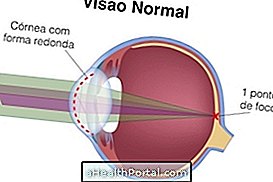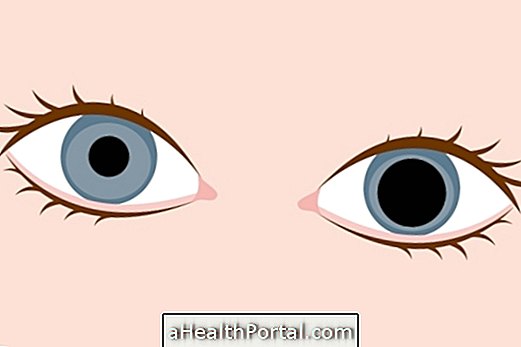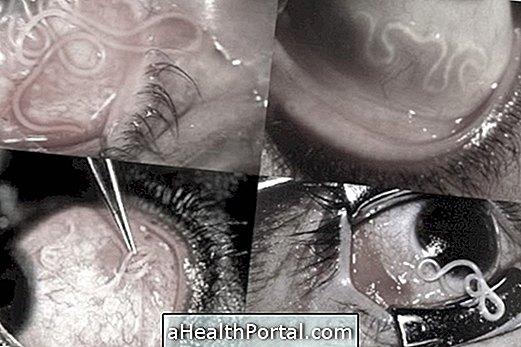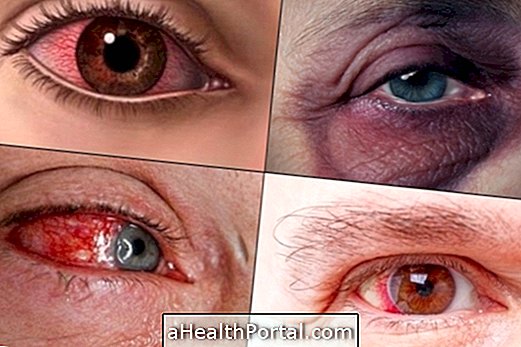Astigmatism is a problem in the eyes that makes one see very blurry objects, causing headaches and tiredness of the eyes, especially when it is associated with other vision problems such as myopia.
Astigmatism usually arises from birth, due to a deformation of the cornea curvature, which is round rather than oval, causing light rays to focus on various sites of the retina instead of focusing on only one, less clear picture, as the images show.
Astigmatism is cured through eye surgery that can be done after the age of 21 and usually causes the patient to stop wearing glasses or contact lenses in order to see correctly.


A small strain on the cornea is very common in the eyes, especially as it ages. Therefore, it is common to identify that you have astigmatism after a routine eye exam. However, most cases have only a small degree, which does not change vision and therefore does not require treatment.
How to know if it is astigmatism
The most common astigmatism symptoms include:
- View the edges of a blurred object;
- Confuse similar symbols as the letters H, M, N or the numbers 8 and 0;
- Can not see straight lines correctly.
So when you have any of these symptoms it is advised to go to the ophthalmologist to do the vision test, diagnose astigmatism and start treatment if necessary.
Other symptoms, such as tired sight or headache, may arise when the patient suffers from astigmatism and another vision problem, such as farsightedness or myopia, for example.
Astigmatism test to do at home
The home test for astigmatism consists of observing the image below with one eye closed and one open eye, then changing to identify if astigmatism is present in only one eye or both.
Since the difficulty in seeing in astigmatism can occur from near or far, it is important that the test be done at various distances, up to a maximum of 6 meters, to identify from what distance astigmatism affects vision.

In case of astigmatism, the patient may notice changes in the image, such as lighter lines than other lines or crooked lines, while a person with normal vision should see all lines of the same size, with the same color and distance.
How is the treatment done?
Treatment for astigmatism should always be recommended by an ophthalmologist, as it is necessary to identify the correct degree of astigmatism to know the best glasses or contact lenses.
In addition, since astigmatism is often diagnosed along with myopia or farsightedness it may be necessary to wear glasses and lenses adapted to the two problems.
For a definitive treatment, the best option is eye surgery, such as Lasik, which uses a laser to modify the shape of the cornea and improve vision. Learn more about this type of surgery and its results.
When to See a Doctor
It is recommended to consult your ophthalmologist when you see changes in the image when doing the home astigmatism test, if you see unfocused objects or if you feel headaches for no apparent reason.
During the appointment it is important to inform the doctor if :
- There are other symptoms, such as headaches or tired eyes;
- There are cases of astigmatism or other eye diseases in the family;
- Some family members wear glasses or contact lenses;
- He suffered some trauma to his eyes, like blows;
- You suffer from some systemic disease like diabetes or high blood pressure.
In addition, it is recommended that patients with diabetes or other eye problems, such as nearsightedness, farsightedness or glaucoma, see the ophthalmologist every year.

























